A young boy stares at the sheet of paper before him, lost in thought. He looks peaceful, sitting at a mahogany desk, a goose quill pen in his right hand. Then, when inspiration strikes, he begins to write. His eyes follow the letters as he forms them. Occasionally he stops, dips the pen in the inkwell beside his page and returns to his task.
In the late 18th century, people all over Europe flocked to watch the boy at work. The reason: he wasn’t a boy at all. The Writer, as it was known, is a masterpiece of mechanical engineering, a shockingly lifelike automaton built by Pierre Jaquet-Droz in the 1770s and one of three famous mechanisms that have come to be known simply as “the Jaquet-Droz automata.” The others, made soon after, are called the Draughtsman and the Musician.
Chances are you’ve heard of Jaquet-Droz through the modern-day luxury watch brand that bears his name. But most people are less familiar with Jaquet-Droz the man: a visionary engineer of the 18th century whose clocks and automata created a stir all over the world. Here’s his story.
Pierre Jaquet-Droz was born on July 28, 1721, in La Chaux-de-Fonds, in Canton Neuchâtel, Switzerland. The town would become a major watch and clockmaking centre in the 19th century, and at the time of Jaquet-Droz’s birth, the region already had many clockmakers. His father, Abraham, was a farmer but other relatives, including his maternal grandfather, Daniel Droz, were watchmakers, as were many of the family’s friends. There was always a workbench nearby.
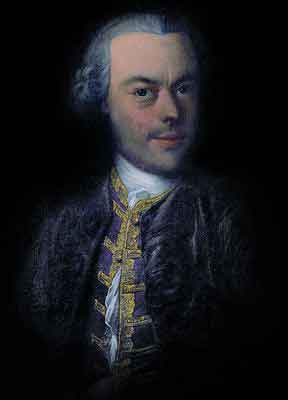 Pierre Jaquet-Droz
Pierre Jaquet-Droz
Abraham Jaquet-Droz wanted his son to become a clergyman, so Pierre studied theology and philosophy, first at the University of Basel, then in Neuchâtel. But his natural affinity for science and mechanics quickly won out. In Basel, Jaquet-Droz came into contact with the father and son Jean and Daniel Bernoulli of the famed family of mathematicians and physicists. The Bernoullis were interested in the construction of unusual automatic machines; it is probably they who whetted Jaquet-Droz’s own curiosity about such devices.
He was also influenced by a fellow Chaux-de-Fonnier named Josué Robert, who was watchmaker to the King of Prussia, Frederick William I. (At the time, Canton Neuchâtel was part of the Kingdom of Prussia; it did not become a full member of the Swiss Confederation until 1848.) Although Robert did not himself train Jaquet-Droz, he guided him through his early career.
In 1738, Jaquet-Droz crafted his first movement. Two years later, he began a seven-year apprenticeship. His reputation as a gifted clockmaker grew. The year his apprenticeship ended, he received an important honor: Monsieur de Nathalys, governor of Neuchâtel and representative of the King of Prussia, came to La Chaux-de-Fonds to see one of his clocks. Jaquet-Droz was soon making frequent trips to Paris, learning from the many prominent watchmakers there. Among them was Ferdinand Berthoud, who would later become one of the first great chronometer makers.
As he sharpened his skills, Jaquet-Droz’s interest moved beyond standard clocks to automata that mimicked nature. Such devices may seem a curious fascination today, but they were very much in vogue among the leisure class of the 18th century. Jaquet-Droz created a number of singing-bird mechanisms, elaborating upon the music box to build highly lifelike automata that could move and sing just like real birds. He would become one of the leading makers of these novelties.
In 1750, Jaquet-Droz married Marianne Sandoz-Gendre, daughter of a La Chaux-de-Fonds supplier of clock cases. They moved into a new house and workshop where their three children were born: Julie, Henri-Louis and Charlotte. But tragedy struck: Marianne died after giving birth to Charlotte, and Charlotte herself died soon after. Jaquet-Droz never remarried.
These deaths were followed by one of the brightest moments in Jaquet-Droz’s career. A local enameller introduced him to the new governor of Neuchâtel, Lord George Keith. Keith, a Scot, had close ties to Spain (he had served as ambassador there for the Jacobites and would do so again, from 1759 to 1761, for Frederick the Great of Prussia). Recognising Jaquet-Droz’s extraordinary ability, Keith arranged for him to show his works to the Spanish king, Ferdinand VI. The king was fascinated by mechanical devices and was said to go around his rooms, personally setting each of his clocks with a key.
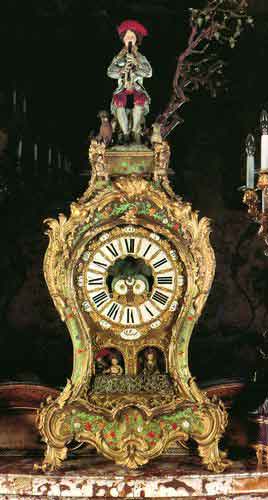 The Shepherd clock remains in Spain to this day
The Shepherd clock remains in Spain to this day
Before leaving for Spain, Jaquet-Droz dismantled the six pieces he planned to take with him and prepared a special carriage to securely hold them. On April 4, 1758, in the midst of a blizzard, Jaquet-Droz left La Chaux-de-Fonds accompanied by his assistant, Jacques Gevril, and his father-in-law, Abraham-Louis Sandoz. The journey to Madrid took 49 days, traveling by way of Lyon and Barcelona.
Jaquet-Droz and his colleagues were welcomed in Madrid by Don Jacinto Jover, a friend of Lord Keith. Jover housed and fed the Swiss party during their stay in Spain. Sandoz kept a diary throughout the trip. According to Sandoz, the visitors liked some things about Spain, including its architecture and cuisine (there they tasted cucumbers and tomatoes for the first time), but as Calvinists from the provincial Jura Mountains, they did not feel at ease in the vehemently Catholic country (the Spanish Inquisition was still taking place). What’s more, they had to endure a seemingly endless wait to present their pieces to Ferdinand.
After arriving in late May, it took Jaquet-Droz weeks to reconstruct the mechanisms he had brought. On July 1, he wrote home, saying that he expected to see the king sometime in the following three weeks.
In fact, he would wait far longer. The year 1758 was one of upheaval for the Spanish monarchy. Ferdinand, who had been in power since 1746, was an unhappy and moody king. Both he and his wife, Queen Barbara, were ill. On August 27, while Jaquet-Droz was still waiting to see Ferdinand, Barbara died, leaving Ferdinand in a state of severe depression that marred the rest of his reign. He retreated to Villaviciosa, a fortress castle outside of Madrid, where he would stay until his own death in August 1759. He began to spend most of his time in bed, occasionally wandering the halls unwashed and undressed. Jaquet-Droz finally got the call to see him in early September and traveled to Villaviciosa with his creations.
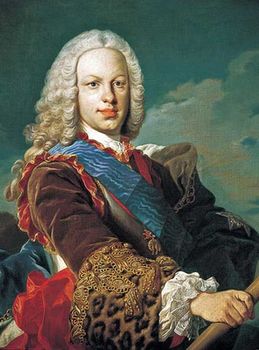 Ferdinand VI of Spain
Ferdinand VI of Spain
One of these was a clock known as “La Nègre.” It featured a jaquemart: a small mannequin of an African man that would strike a gong as many times as it was commanded to do so. It appeared to understand speech and could even solve math problems that its master asked of it. At first, this creation seemed like magic to the king and his court. But Jaquet-Droz revealed its workings to the monarch: the operator could use a hidden wire to trigger a magnetised needle in the clock, so that the jaquemart would sound the gong for as long as the needle was displaced from its default position.
Another piece that Jaquet-Droz showed the king – and which is still in existence – was called “Le Berger” or the Shepherd. The horological historian Alfred Chapuis has called it “one of the most celebrated automaton and astronomic- function clocks in the world.” It featured an elaborate pastoral scene. Small human figures would emerge and retreat from a balcony. On top of the clock, a shepherd automaton sat perched in a tree with a flute to his lips. One of the wonders of Le Berger is that the shepherd does in fact play melodies on the flute, blowing through the mouthpiece and covering the holes with his fingers to change the pitch. Meanwhile a small dog nearby stands guard over a basket of fruit. When a person reaches down to the clock and removes a piece of fruit, the dog barks. Apparently the sound was so real that the king’s own dog began to bark in response. In addition to these automata, Le Berger had numerous complications, including a grande sonnerie, equation of time, perpetual calendar and barometer.
Following the audience, Jaquet-Droz hastened to write to his host, Don Jacinto:
You would not have believed how happy [the king] was with them. He said so while I was there and also in my absence. … He could not stop looking at the clocks, which functioned perfectly. Many lords of the court complimented me by noting the king’s satisfaction. … He himself operated my clocks more than 100 times, a smile constantly on his face. Things could not have possibly gone any better.
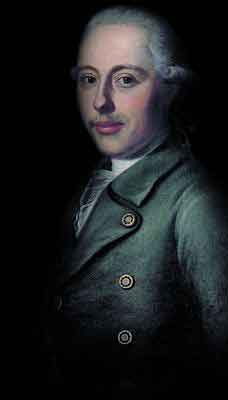 Henri-Louis Jaquet-Droz
Henri-Louis Jaquet-Droz
The automata’s resemblance to real life was striking enough that they have generated their own lore. According to one story, Jaquet-Droz was suspected of sorcery and forced to reveal the automata’s workings to the Grand Inquisitor. Another account claims that the automata were imprisoned briefly while the authorities tried to figure out how they worked. Yet another tale tells of a group of monks who came to see the devices in the Spanish court. When the automata were activated, the monks were overwhelmed with wonder and prostrated themselves in prayer.
For the six mechanisms, Jaquet-Droz was paid 2,000 gold pistoles, a fortune at the time. He returned to La Chaux-de-Fonds in March 1759 and used the funds to expand his workshop.
There, more than a decade later, he made the Writer, the first of the three celebrated Jaquet-Droz automata.
With some 6,000 parts, it can be programmed to reproduce any message of up to 40 characters. Although writing automata had been produced before Jaquet-Droz, none was so lifelike, nor so compact. Jaquet-Droz’s great achievement with the device was fitting the entire mechanism in the small body of the mannequin. Earlier writing machines had needed large objects (such as a globe) to hide their mechanisms.
In the upper half of the Writer’s body is a long vertical cylinder, made up of three sets of 40 cams. One set of cams controls the horizontal movements, another the vertical movements, and a third the amount of pressure the Writer applies to the paper, thus enabling it to make both light and heavy strokes, just like in real human script. Beneath the vertical cylinder, the second part of the mechanism incorporates a disk with 40 spaces on it, so that the order of characters can be selected for the Writer’s message. The automaton can move its head and eyes as it composes, and it is able to compensate for changes in distance between the figure and the desk so that the letters remain evenly spaced. Over time the device has been programmed to write different messages, which have included “Les automates Jaquet Droz à Neuchâtel” and, ironically, “I think therefore I am.”
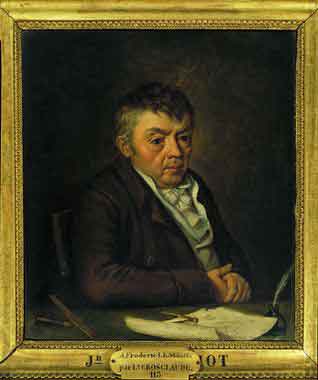 Jean-Frédéric Leschot
Jean-Frédéric Leschot
By the time he began work on the Writer, Jaquet-Droz had taken on partners: his son Henri-Louis, born in 1752, and a boy he had adopted named Jean-Frédéric Leschot. Both had become excellent craftsmen and engineers. (Born in 1746, Leschot went on to become one of the most famous watchmakers of his day.) The Draughtsman, similar in some respects to the Writer, was largely the work of Henri-Louis. The Draughtsman is a young boy sitting at a desk with a pen in its hand. When activated it executes one of four drawings: that of a dog, a child in a carriage pulled by a butterfly, Louis XV of France in profile or Louis XVI and Marie Antoinette together in profile. The Draughtsman operates on the same principles as the Writer: the elements of each drawing are ordered on the bottom disk, and for each separate line or motion of the hand there are three sets of cams on a cylinder. Between each movement, when the levers lift up so that the cams can change position, the automaton blows the dust off the paper, using a bellows in its head to push the air through.
Henri-Louis Jaquet-Droz had studied music, and he directed the making of the Musician, the third automaton. This figure consists of a young woman seated at a small pipe organ. Its hands move over the 24 keys, allowing it to play one of five melodies. The Musician is particularly remarkable for its ability to actually play: the organ is a working instrument with a bellows to pump air into its pipes. The mechanism for the mannequin is located primarily in the stool on which it sits. The mechanism has two brass drums marked with teeth that correspond to the notes each finger must play. Steel cams direct the movement of the arms from side to side so that the fingers fall on the correct notes. Another part of the mechanism makes the Musician “breathe,” her chest rising and falling as she plays. The eyes, head, and upper body also move. At the end of her performance, her torso lifts and leans forward, making a curtsey to her audience.
When the three automata were completed in 1774, the Jaquet-Drozes first showed them in their home in La Chaux-de-Fonds. People came from all over, crowding into the parlor to see the remarkable “family” of creations. At the start of 1775, Jaquet-Droz took the automata to Paris, where he showed them publicly each morning and afternoon, charging for admission. He also showed them to Louis XVI and Marie Antoinette. (According to one story, the Jaquet-Droz team was so nervous about their appearance at court that in preparing for it Leschot accidentally switched the device’s cams. When Marie Antoinette called upon the Draughtsman to sketch her own likeness, it drew the dog instead.) Later that year, the automata were taken to London; over the next few years they would also travel to Holland, Flanders and to northern France for further showings, accompanied most often by Leschot.
Sparked by the success of the automata, the family business grew far beyond Canton Neuchâtel. In 1774, Henri-Louis opened up a branch of the business in London which focused on selling Jaquet-Droz timepieces and automata to China. Lavishly decorated watches, often sold in pairs, were in high demand there, and Jaquet-Droz became one of the country’s key suppliers. By 1783, Henri-Louis put the London office in the hands of Henri Maillardet, an associate from Neuchâtel. The Jaquet-Droz et Maillardet firm, as the London branch was called, worked closely with the British company Cox to distribute Jaquet-Droz watches not just in China but in the Middle East and India as well.
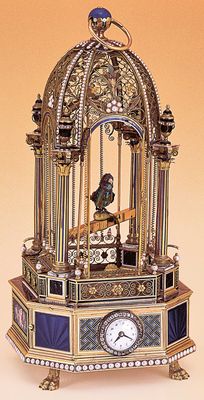 A Jaquet-Droz singing bird from the 18th century
A Jaquet-Droz singing bird from the 18th century
Henri-Louis’s health declined in the 1780s, and he returned to Switzerland in 1784. Working with Leschot, he opened a workshop in Geneva. The company’s headquarters remained in La Chaux-de-Fonds, overseen by Pierre Jaquet-Droz. Producing automata (especially the popular singing-bird mechanisms), clocks and watches through its various offices, the Jaquet-Droz company reached the peak of its success in 1786 and 1787.
Its decline soon followed. As Pierre’s health deteriorated, he retreated to Bienne, where he died in 1790. He is buried in the city cemetery there. Only a year later, Henri-Louis died in Naples, where he had gone in an effort to improve his fragile health. Leschot was left in charge of the business and struggled to maintain it until his own death in 1824.
But the fashion for novelties like Jaquet-Droz’s had passed. As the French Revolution and the Napoleonic era changed the face of Europe, interest in these luxuries ebbed. Many of the great Jaquet-Droz pieces were lost over the decades that followed. The famous trio changed hands multiple times, traveling throughout Europe with their different owners, before finally being returned to Neuchâtel at the start of the 20th century. Today they are on display in the Musée d’art et d’histoire de Neuchâtel. On the first Sunday of each month, they demonstrate for the public their skills at writing, drawing, and playing music.
In 2000, the Swatch Group bought the rights to the Jaquet-Droz name and founded a new Jaquet Droz watch brand (the company does not hyphenate the name). It specialises in luxury watches using some of the same techniques that Jaquet-Droz employed on his China-market watches, such as sophisticated enameling and paillonnée. One of the brand’s signatures is the Grande Seconde, inspired by a Jaquet-Droz pocketwatch. Its dial has two overlapping rings, with the larger one displaying the seconds at 6 o’clock.
The brand also draws upon the Jaquet-Droz heritage of automaton engineering. In 2012, it began making singing-bird automata wristwatches. The latest, which came out last year, is called the Bird Repeater Openwork. It has a skeletonised dial with two blue tit birds on it that sing, feed their young and spread their wings.








